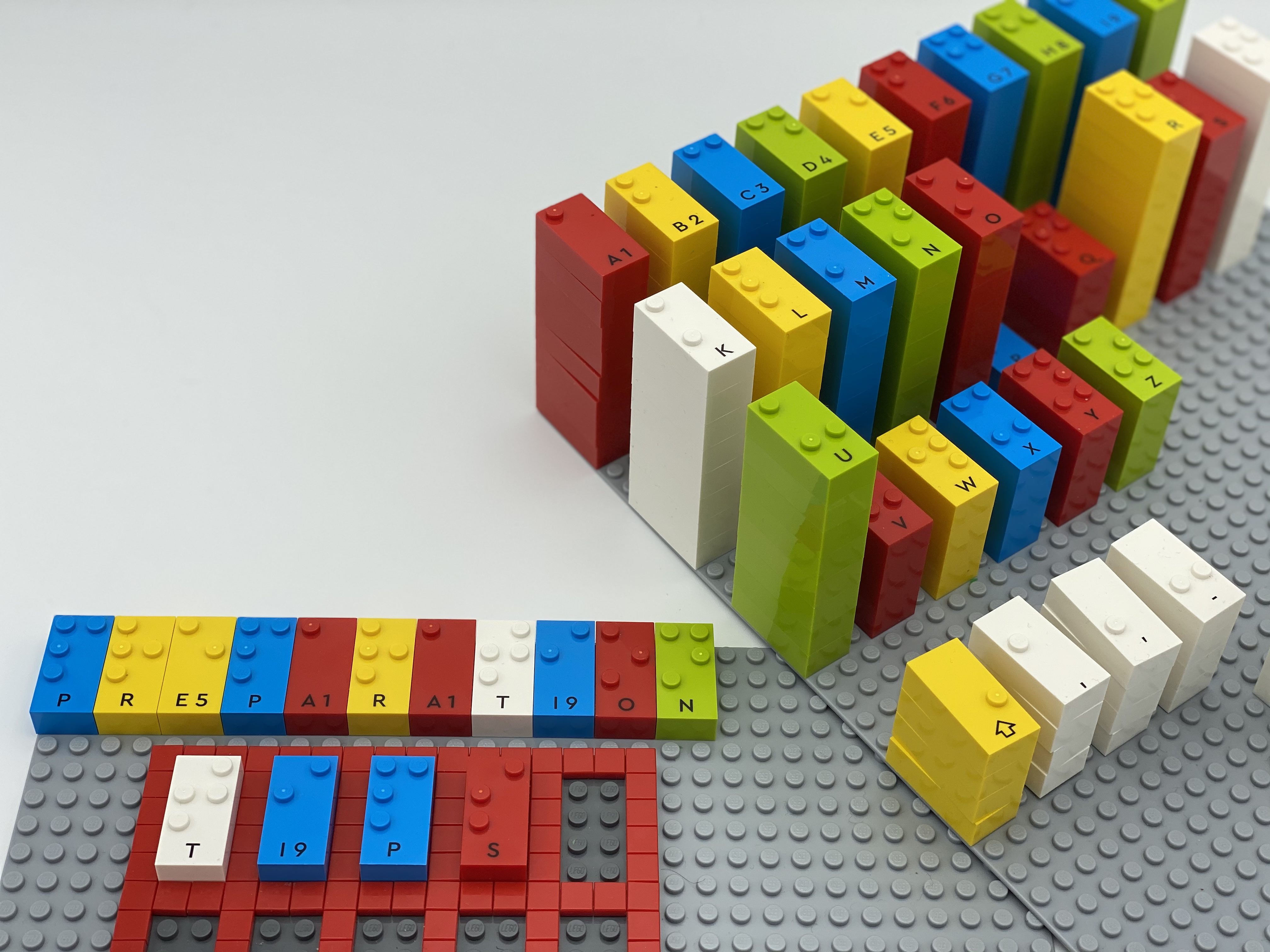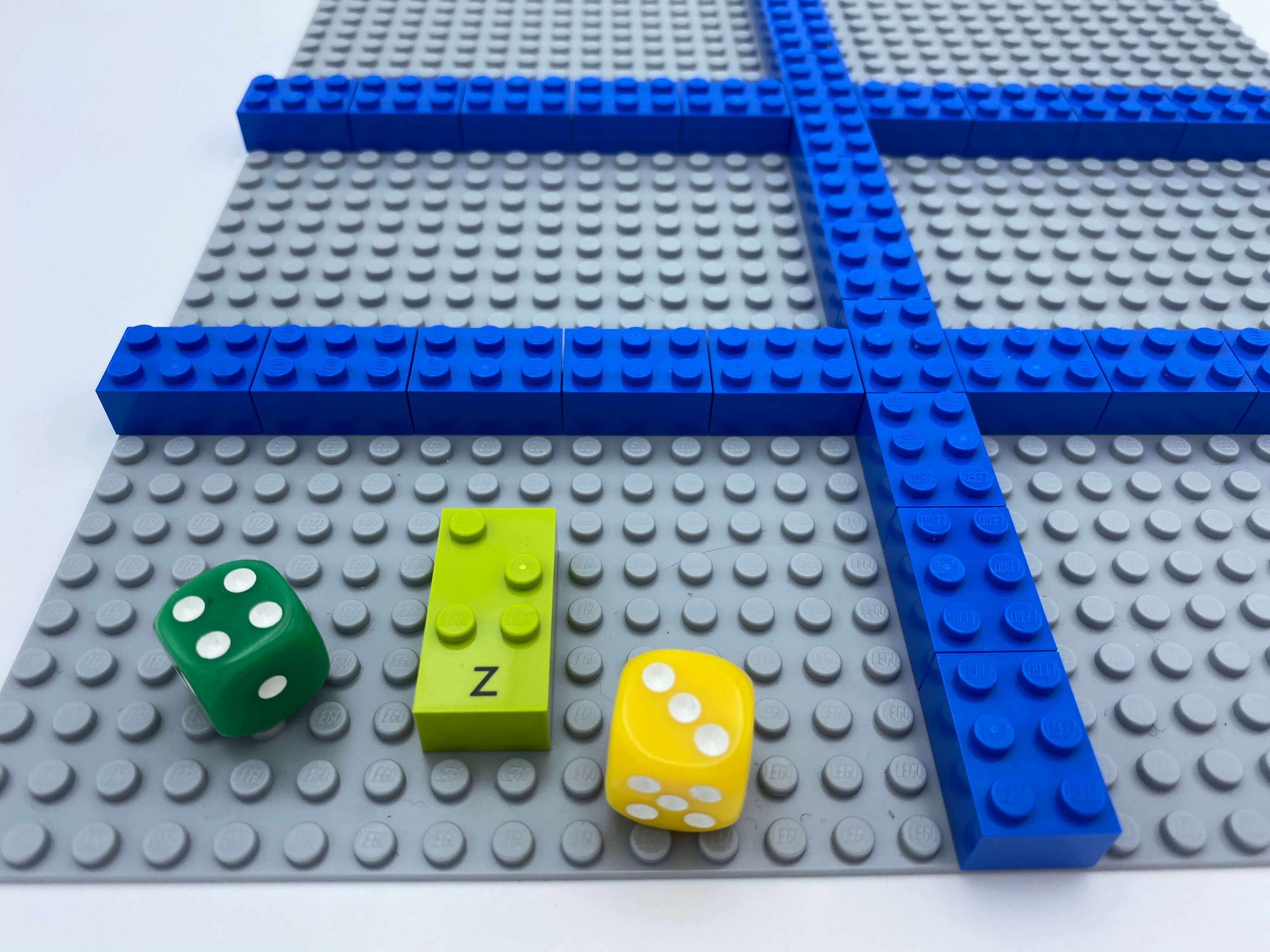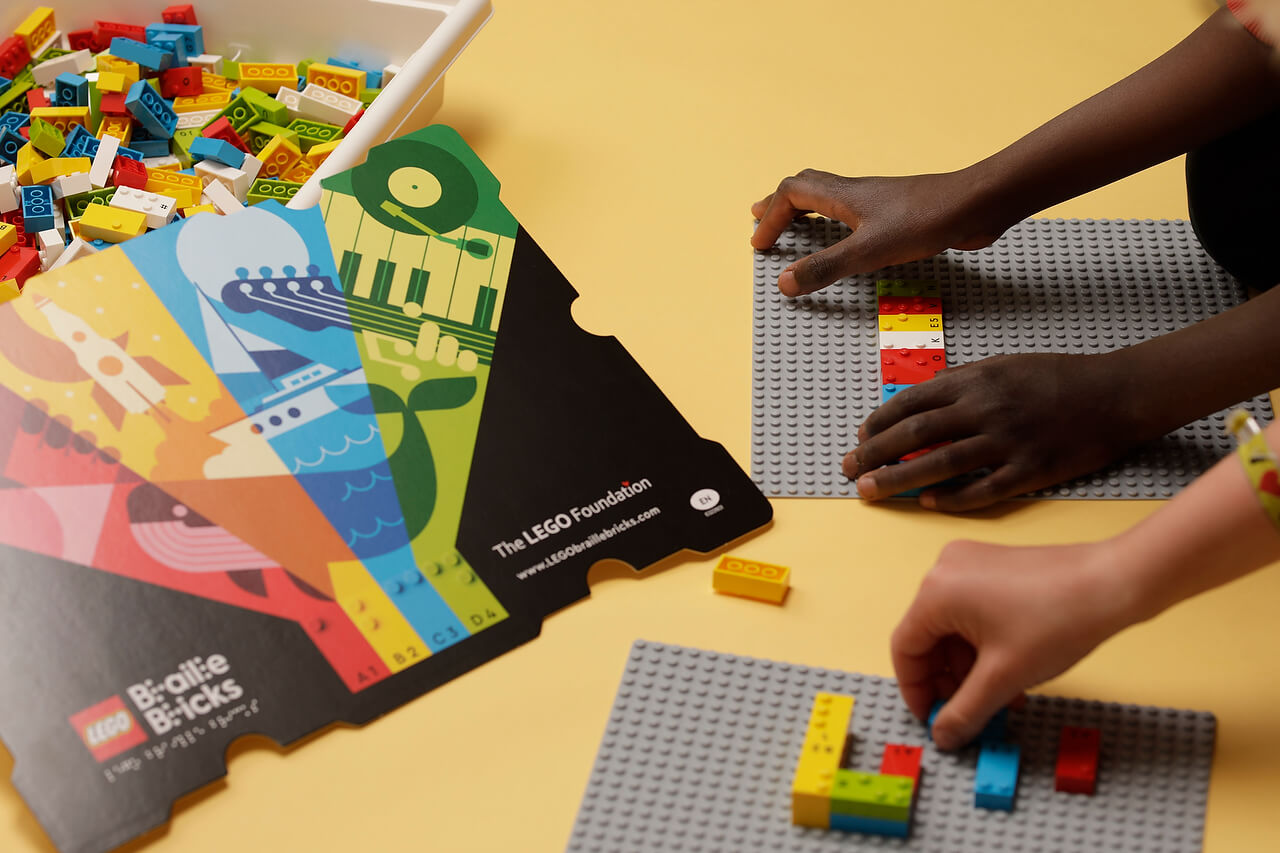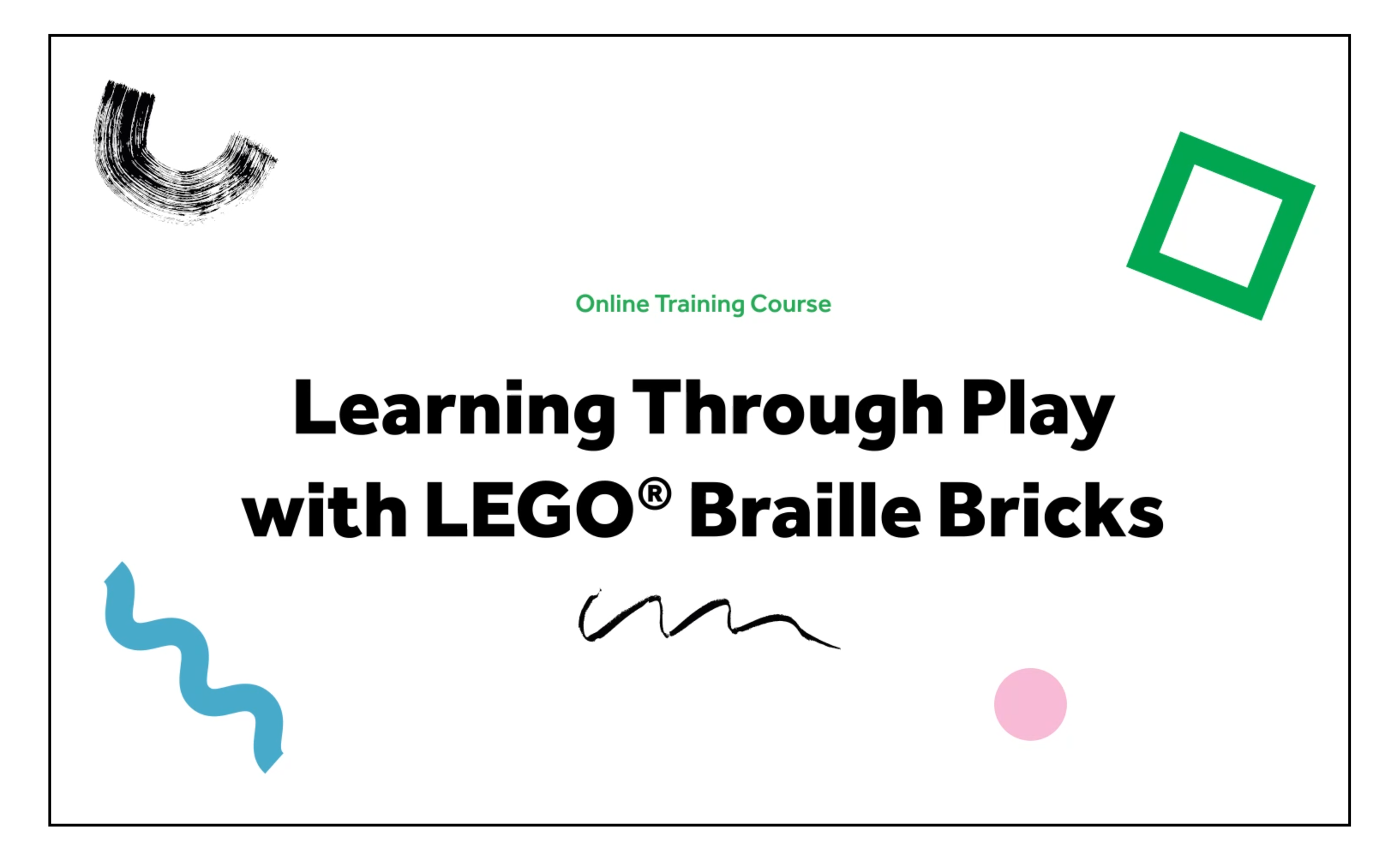Facilitating Learning Through Play
Free braille materials and tools
At the LEGO Foundation, we recognize play as a powerful learning context. Learning through play builds on how we naturally learn from birth. It can include games to memorize facts, but its real potential is to foster children’s understanding of concepts and mastery of a breadth of skills, enabling them to apply what they learn - even in creative ways. When learning through play, children have experiences that are actively engaging, joyful, meaningful, iterative and socially interactive.
In practice, these five characteristics will ebb and flow; each characteristic is not necessary all the time, but over time, children should be active and absorbed, feel moments of joy and a meaningful connection, iterate and engage with others.
This kind of engaged learning can happen across a spectrum of practices: from children’s self-directed, free play to more guided forms of play, games and instruction.
Mindset is fundamental
To facilitate Learning through Play the educators’ mindset is absolutely fundamental: viewing children as capable and curious, and themselves as learners on more mutual terms with children forms the basis for valuing and adopting a facilitating (rather than directing) approach with children. In turn, this mindset and approach has implications for how educators 1) design activities 2) interact with children in practice and, 3) reflect on and evaluate children’s leaning and progress.
These three elements make up the LEGO Foundations Play Facilitation Framework. You can learn more about Learning through Play facilitation at the LEGO Foundation webpage.
We offer braille tools and materials that facilitate Learning through Play and help teachers develop a playful mindset that makes learning braille fun and joyful.
Active engagement
- Learning through Play involves being actively engaged. Imagine a child who is fully absorbed in playing with a set of building blocks. She is imagining how the pieces fit together and becomes so immersed that she fails to hear her father calling for dinner. This type of mental immersion and ability to stay focused are especially powerful in the context of Learning through Play.
Meaningful
- Meaningful is when a child can relate new experiences to something already known. In play, children often explore what they have seen and done, or noticed others do, as a way of grasping what it means. By doing so, they can express and expand their understanding through a variety of media, symbols and tools.
Joyful
- Joy is at the heart of play - both enjoying a task for its own sake and the momentary thrill of surprise, insight or success after overcoming challenges. Recent research shows that curiosity and positive experiences are linked to learning. For example, young children show increased levels of learning after a surprising event compared to one that is expected.
Iterative
- From a toddler trying different ways to build a high tower with blocks, to a young child discovering that the angle of a slide impacts how far a marble will shoot across a room, iteration – trying out possibilities, revising hypotheses and discovering the next question – leads to deep learning.
Social
- Social interaction is a powerful tool for both learning and play. By communicating their thoughts, understanding others through interaction and sharing of ideas, children are not only able to enjoy being with others, but can also build more powerful relationships.
Braille materials and tools

Facilitating activities for visually impaired children
Inclusion of children in learning activities is crucial. Specialized adaption of activities promotes successful education.

LEGO® Braille Bricks - get preparation tips and tricks
Tips and tricks to prepare and save time, i.e. pre-sorting or storing bricks in an easily identified order, placing a tactile marker on a base plate...

LEGO® Braille Bricks - get material tips and tricks
Tips and tricks to introduce additional objects in play, promoting creativity in learning activities, i.e. other LEGO products, egg cartons, Hula Hoops, dice...

Find inspiration for facilitating Learning Through Play
Find more information and inspiration. Visit Facebook communities of practitioners and websites dedicated to sharing LEGO Foundation knowledge.

MOOC - Massive Open Online Course
Fully accessible virtual course, available via Future Learn. Can be taken on-demand at one’s leisure, with a course certificate received upon completion!